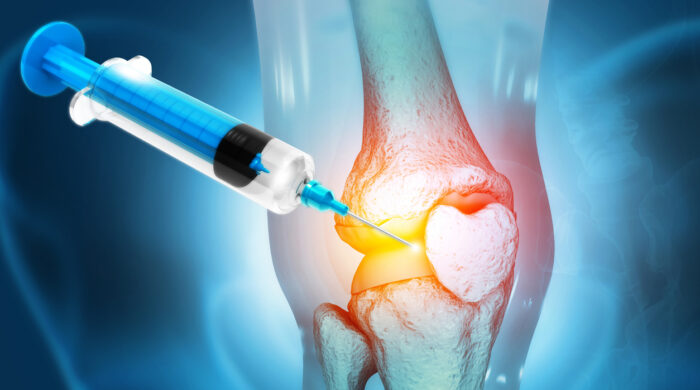Joint injections are often considered a short-term fix for a long-term problem. For many people who experience joint pain, steroid injections are just one treatment in a progression that inevitably ends with joint replacement surgery.
Some patients might prefer to skip straight to the end solution, but for others, delaying surgery is a worthy goal. For some people who deal with joint pain and inflammation, injections may be the best available treatment.
Many factors determine which treatment pathway will be the most appropriate for an individual patient.
Benefits of joint injections
Joint injections deliver a small dose of anti-inflammatory steroid directly to the site of the joint problem, ideally resulting in decreased inflammation and as a result, decreased pain for a period of time.
However, the effectiveness of joint injections varies widely. Some patients are highly responsive to steroids and from a single injection, can experience pain relief that lasts for months or even years, enabling them to delay the need for surgery indefinitely. But for others, the degree of pain relief and the duration of that relief may be shorter.
For patients whose age or pre-existing health conditions make them ineligible for joint replacement surgery, repeated joint injections can be a viable solution for long-term pain management.
What is involved with a joint injection?
During a joint injection, a healthcare provider – usually a primary care provider or orthopedic surgeon – will use a needle and syringe to apply a small amount of medication directly to the site of inflammation in the joint.
The medication used is a steroid such as triamcinolone, which is a localized anti-inflammatory and different from the anabolic type of steroids people use to build muscle.
Joint injections usually combine anti-inflammatory steroids together with lidocaine, which causes initial numbness to the area, and helps the steroid disperse through the joint. A well-placed injection will provide immediate pain relief because of the lidocaine.
Where are the most common locations for joint injections?
Steroid injections are most often prescribed because of arthritis or other inflammation that causes pain in a joint.
The most common sites for joint injections are the shoulders, hips, knees, spine, and the base of the big toe and thumb, but many other joints can also be treated with this method. Sometimes steroid injections can also treat inflammation in tendon sheaths.
The anatomical structure of each joint can affect the difficulty of the procedure. The amount of pain involved in an injection varies by joint, and depends on the size of the joint area, the amount of inflammation, the size of the needle, and the patient’s anxiety level.
Some joints, such as those that are smaller and more sensitive (like in the hands and feet) are so painful to inject that a doctor may refuse to administer injections to those areas.
Can you get an injection before joint replacement surgery?
Patients who are considering joint replacement surgery should know that although steroid injections can reduce inflammation, they can also interfere with the body’s post-surgical healing processes.
As a result, orthopedic surgeons prefer not to perform joint surgery until six months after a patient’s last joint injection.
What are the risks of joint injections?
The most significant risk of joint injections is simply that they will not result in reducing the patient’s pain, or that the pain relief will be short-lived.
Depending on the location of the injection and the skill of the person administering it, the joint injection itself can be painful. And infection is a minor risk inherent in any procedure, such as an injection, that punctures the skin. When the injection site is a tendon sheath, there is a small risk of tendon rupture.
Finally, a serious but exceedingly rare risk of joint injections is femoral head necrosis. Regardless of which joint receives the injection, the top of the thigh bone can experience a loss of blood supply that leads to cell death and potential bone collapse, which itself requires orthopedic treatment.
Who to talk to if you’re having joint pain
If you’re experiencing joint pain, talk with your WWMG primary care provider to diagnose the cause of your pain and discuss your treatment options. They can help you decide whether joint injections are appropriate for your situation and state of health.
If joint injections are your treatment of choice, your primary care provider can administer the injection right in their clinic, or may refer you to a specialist such as an orthopedic surgeon or physiatrist for additional evaluation and care.
